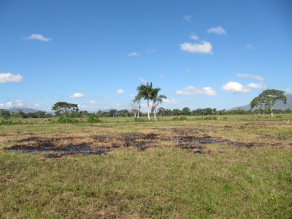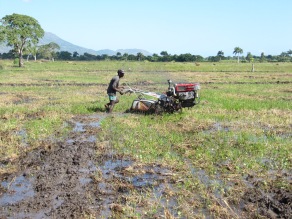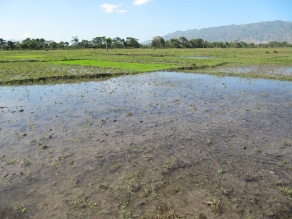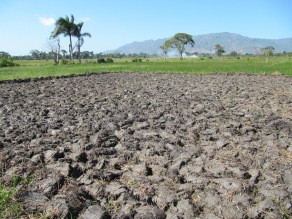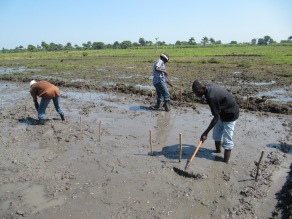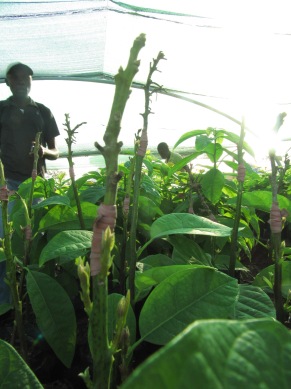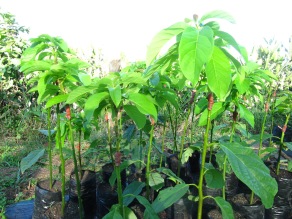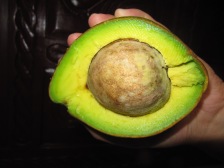On Tuesday we sowed the rice seeds into the nursery.
On Monday, we added 6 more raised nursery beds to keep a lower seeding density, so it will be easier to separate the seedlings when transplanting. We soaked the seeds in salty water, and discarded those floating on the surface of the solution. We then rinsed the seeds with clean water and bagged them when they are still wet. The seeds were then put in plastic buckets.
When sowing seeds, we first wetted the beds to make the soil soft. Then we spread a thin layer of sand to make it easy to uprooting seedlings upon transplanting. We sowed the seeds on the top of the sand. Every variety has 2 nursery beds. After sowing, we applied a thin layer of vermicompost on the seeds, and then covered the nursery beds with wet plantain leaves. To make sure the seeds have enough moist to germinate, we slightly watered the beds with a watering kent.
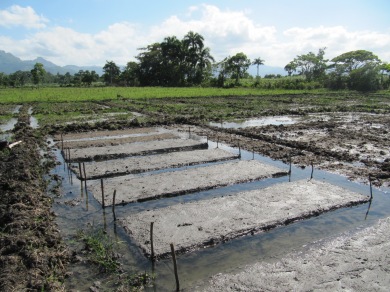 (raised nursery beds)
(raised nursery beds)
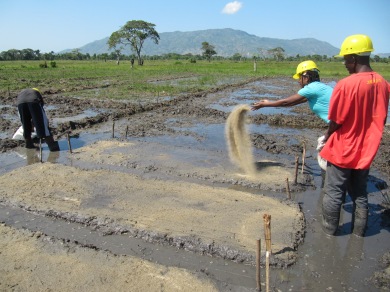 (spreading sand)
(spreading sand)
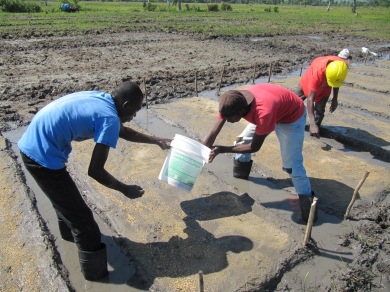 (sowing seeds)
(sowing seeds)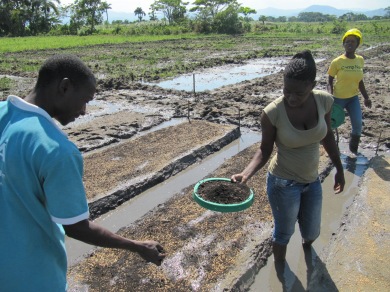 (applying compost)
(applying compost)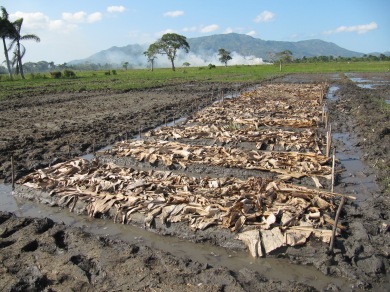 (covered with plantain leaves)
(covered with plantain leaves)
While waiting for the seeds to grow, we will continue working on land preparation. We have plowed all the plots, and need to puddle and level the soil. We will work on the SRI plots first, because the seedlings for SRI need to be transplanted within 12 days after germinating.
Last Thursday, we went to an SRI plot in a village called Grison-garte to collecting yield data. People in this village use cows to plow their land. The plot was planted early November in 2013, so did many other traditional rice plots in the village. It is 42m x19m in size. The variety used was Leonard, planted 1 plant per hill, with the spacing of 25 cm. By the time of harvesting, it was weeded twice and fertilized 3 times with chemical fertilizer (due to the lack of organic matter) at the rate of 150 Kg/Ha. There was few weed in the plot, and the top soil was dry with a few cracks. Yet the subsoil was wet. The unexpected long-lasting drought hit during the flowering and grain filling stages of the rice, which greatly impacted the yield. Many farmers have lost a lot. Our SRI plot survived well because the plants tolerated the drier condition better than those planted in the traditional way. This might be a good implication about the potential of SRI helping farmers responding better to climate change. However, the SRI plot was severely damaged by birds and goats, about a quarter of the plot had almost no grain left on the plants. For data collection, we chose 10 random hills from the plot, pulled out the plants, measured their height (cm), root length (cm), number of tiller and number of panicle per hill. Then from these 10 plants, we randomly chose 5 panicles for their length (mm), number of grains per panicle, and number of empty grains per panicle. Afterward, we used a wooden square frame which was 1m x 1m in size, putting it on the ground at 5 random location in the plot and harvesting the plants inside the square. We then weighed the grains from every square and measured the moisture content (%) at the same time.
Here is a summary of the data from this plot, followed by some photos.
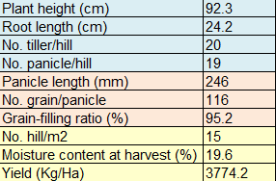
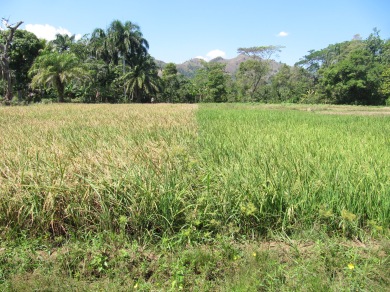
(left:SRI plot; right:traditional plot planted about the same time as the SRI plot with the same rice variety, it is not mature yet)
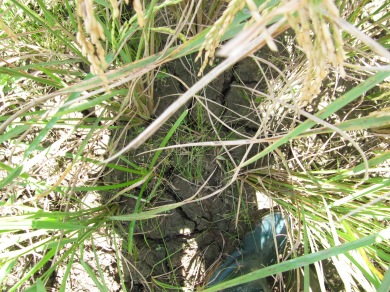
(top soil is dry and with cracks. not a lot of weeds)
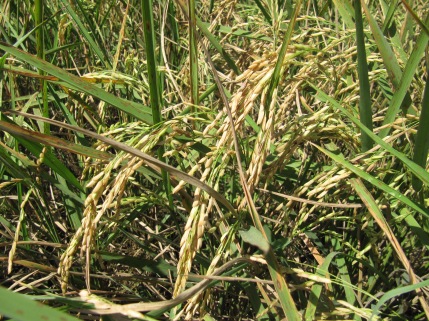
(panicles, some grains are still green)
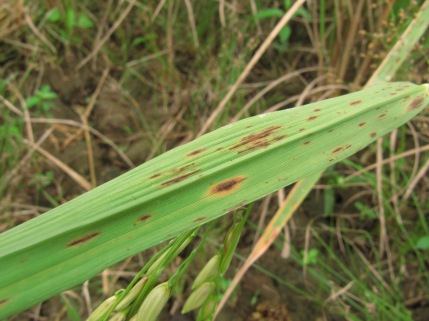
(many leaves have such spots. is this rice blast?)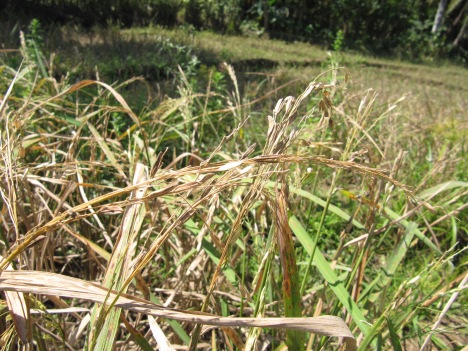
(empty panicles…all grains eaten by birds)
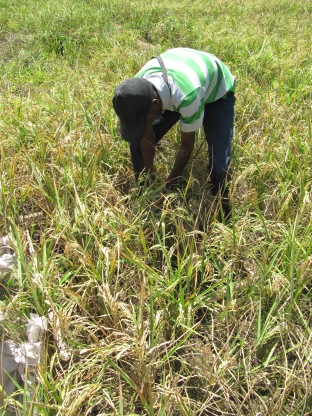
(technician of iF Foundation harvesting crops inside the wooden square)

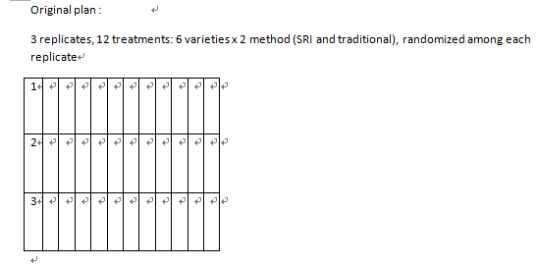
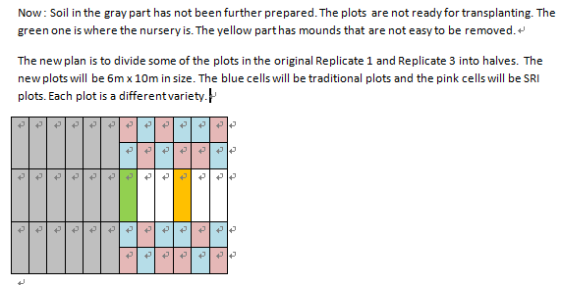
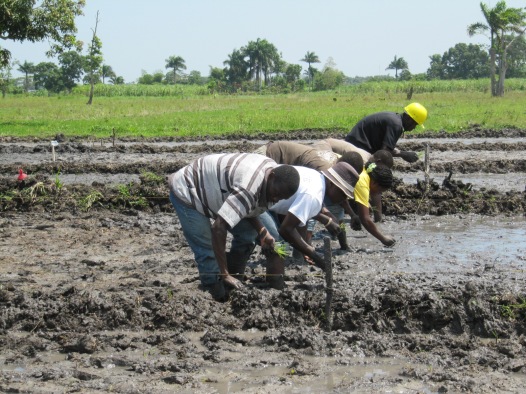
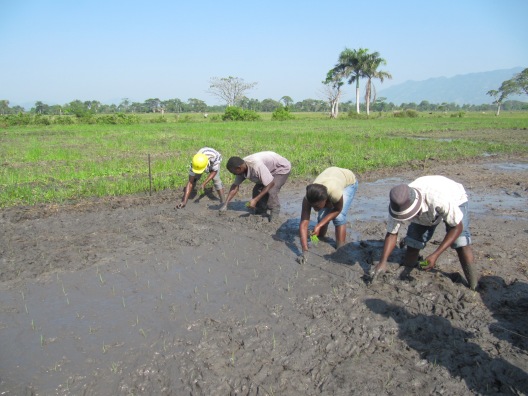


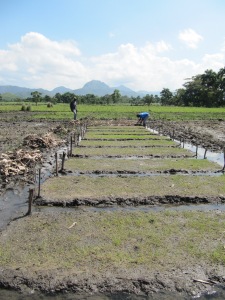
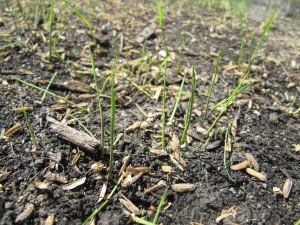
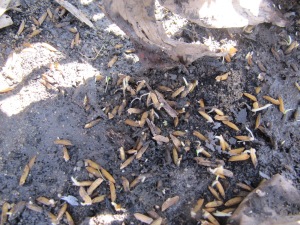


 (sowing seeds)
(sowing seeds) (applying compost)
(applying compost) (covered with plantain leaves)
(covered with plantain leaves)






